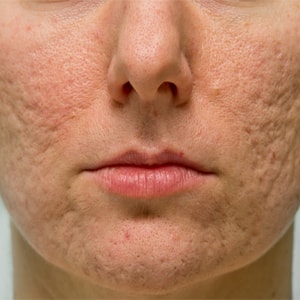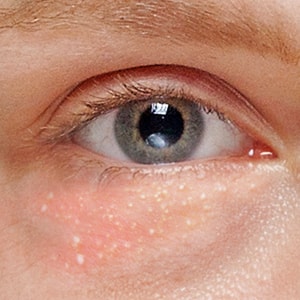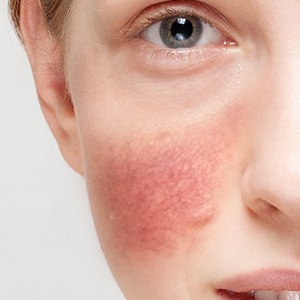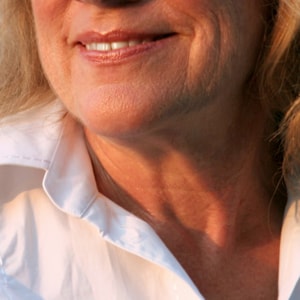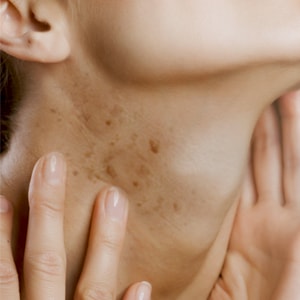Alopecia Hair Loss Treatment
Suffering from Hair Loss? Hair Loss Treatments in Tunbridge Wells, Kent

We can help treat Alopecia safely & effectively
The average scalp contains 90000-140000 pigmented hairs. People with blonde hair have more follicles than people with dark hair. The number of follicles decreases slightly as you get older. At any one time approximately 90% of terminal hairs are in the growing phase lasting around 1000 days and up to 7 years. The majority of hairs are in the regression phase where the hair growth actually stops (hair still attached to scalp), this phase typically lasts 2-3 weeks. The final stage is the resting phase, lasting between 3-4 months.
Available Treatments
1) Excimer laser (308nm)
The use of the Excimer laser is an effective and safe procedure for autoimmune skin conditions such as Alopecia Areata. The results are long lasting and extremely effective.
The procedure needs to be carried out twice a week, usually a minimum of 8-10 treatments will be needed. Please note results can depend on individual response and severity of disease a consultation and test patch are both needed prior to any treatment.
2. Platelet Rich Plasma (PRP)
PRP, is a new procedure for Alopecia Areata. PRP is known to contain more than 20 different growth factors, which are important in promoting cell proliferation and differentiation. A recent study has shown that PRP increases the proliferation of dermal cells, and additionally, fibroblast growth factor-7. These are both stimulators of HF growth, which are stimulated after PRP. In addition to its inducing effects, PRP is also a potent anti-inflammatory product, which can suppress cytokine release, limiting local tissue inflammation. The anti-inflammatory effects of PRP are of great benefit to this condition.
3. Home care: oral and topical medication will be tailored for individuals in regards to their requirements.
Did you know that minerals (Zinc Sulfate, Copper, Selenium & Magnesium): are known for their anti-oxidant properties that lead to growth and recovery! – Zinc sulfate at a dose of 200 to 600 mg/d – Vitamin B complex: combined with zinc prevents hair loss and regulates the sebum secretion. – Amino acids (L-DOPA): combined with vitamin B, weakens the gray of the hair.
Androgenic Alopecia
In Androgenic Alopecia the terminal hair follicle size is reduced both in length and diameter. The hair bulb moves upwards in the Dermis yielding a small vellus hair follicle (secondary vellus hair). Over time the terminal scalp hair follicles undergo progressively shorter cycles involving reduced anagen growth periods. Although growth periods are reduced catagen and telogen time periods remain the same. The net effect is that Androgenic Alopecia is characterized by a gradual increase in the number of secondary vellus hair and resting telogen hair, while the anagen hair decrease in number. Ready to get Medical…..? Androgenetic Alopecia remains the main cause of male & female pattern baldness. Both types of alopecia are caused by Dihydrotestosterone (DHT) which is the metabolite of testosterone. DHT acts on androgen binding receptors on the genetically susceptible hair follicles.
Treatments available for Androgenic Alopecia:
1) Mesotherapy Hair restoration injection, a series of virtually painless injections of DHT blockers, vitamins and minerals. These are directed into the scalp to effectively aid hair re-growth in women experiencing hair loss. This particular procedure can also reverse the male pattern baldness in men. Mesotherapy can be used in women experiencing postpartum hair loss and peri-menopausal or menopausal hair loss.
In addition, Mesotherapy has a good response in younger men experiencing early stages of male pattern baldness. Mesotherapy replaces the vitamins and minerals which the body loses as we age. So how does Mesotherapy work? The medications in Mesotherapy cause an increase in blood circulation to the scalp area, this then stimulates the hair follicles. Hair restoration injection, through micro-injections, delivers specially formulated customized cocktails under the scalp, straight to the hair follicles. This mixture delivers long-acting neutralizing effects on the DHT hormone produced in the body, allowing for hairs to grow. This is not a cure for hair loss, but certainly a safe, simple, and cost-effective option to treat certain conditions. Hair restoration injection, can in some cases eliminate the need for hair transplant.
2) Platelet Rich Plasma
PRP is a new, safe and efficient treatment for Androgenic Alopecia. More recently, it was discovered that PRP promotes hair growth. PRP is known to contain more than 20 different growth factors, which are important in promoting cell proliferation and differentiation. PRP can be used in conjunction with prescription medications for Mesotherapy.
Treatments available for Telogen Defluvium:
Synchronisation of the hair growth phase results in a lot of hair being in the resting phase at the same time. The hair loss is usually the result of a stressful event, 2 – 4 months before the hair loss starts. Pregnancy and certain illnesses can all trigger Telogen Defluvium. Natural hair growth will usually recover within 1 year.
Treatments recommended: PRP, Mesotherapy, High frequency scalp massage, home care.
Treatments available for Alopecia Areata
Alopecia Areata is the most common form of hair loss after Androgenic Alopecia. Most people with Alopecia Areata lose their hair suddenly from certain areas of their head, the hair grows back on its own accord, within 2 years. Sometimes, the hair only grows back in one spot, while hair elsewhere falls out. However, this process also stops after a number of years and hair loss ceases.
The most common types of hair loss:
Alopecia Androgenetica
Alopecia Areata (Totalis)
Telogen Defluvium
Hair loss due to medication
Hair loss due to internal diseases
Hair loss is a natural process. A certain seasonal influence does occur with hair loss peaking around August/September. Each follicle can produce approximately 20 hairs, with a life of 3-5 years, after which it dies off. Baldness may therefore occur at the age between 60 and 100. The fact that a lot of men and women start to go bald at an early age has something to do with the sensitivity of certain follicles and the hormone Dihydrotestosterone (DHT). Dihydrotestosterone inhibits blood flow through to the follicle, and as a result, the growth phase of the hair is reduced from between three and five years to just a couple of months.
Short, thin hair is easy to remove from the scalp and the maximum 20 hair cycles of the follicle in question take place over a period of just five to ten years. The fact that DHT appears in the body from puberty onwards means that baldness can occur from the age of 20 onwards, depending on the concentration of DHT in the blood. Baldness in men occurs initially around the temples and on the crown. The hair thins and the balding temples/crown gradually link up. Excessive hair loss occurs in 40% of women aged forty and above! The shedding of around 100 hairs daily is normal.
We are registered with the CQC as an independent Hospital and proud to be NHS England Authorised Supplier. Cobden House Dermatology is dedicated to providing individualised treatment in a professional and caring environment.
We are one of the UK’s leading non-invasive aesthetic clinics and have some of the most experienced medical practitioners in the country. Over the past 10 years the team has strengthened and our happy patients have helped build an excellent reputation. Our outstanding customer service and treatment satisfaction means on average 98 % of our clients would recommend us to family and friends. Independent survey, June 2014.
Cobden House Dermatology is a private clinic which continually updates and improves treatment protocols. Our clinic has the most advanced, highly effective, safest and suitable for all skin types technology, we only use high quality, clinically tried and tested products. Our practitioners have extensive training in this field and are very experienced with a variety of complex skin types and conditions




